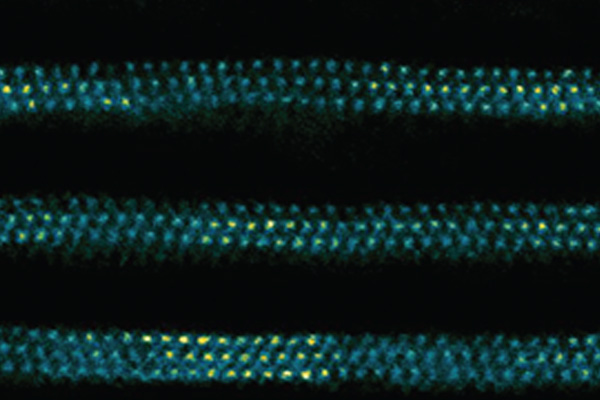Nanoscale materials ripple in the cold, study finds
That observation could help in the design of technologies that use MXenes, a promising new material

Two-dimensional materials only a few atoms thick hold great promise for a variety of technological uses, including energy storage, sensors and superconductivity. UIC researchers have discovered that one class of these ultra-thin materials shows a rippling behavior similar to what we see when we shuffle cards or leaf through a book. That rippling action could help in the design of new technologies, the researchers said.
The ultra-thin materials called MXenes are accordion-like layers of atoms that scientists can customize by adding different chemical groups to create desired properties. A collaboration between the team of Robert Klie, UIC professor and head of physics, and researchers at University of Chicago and Argonne have studied the structure of these materials using high-end instruments at the UIC Electron Microscopy Core.
In the new paper, UIC doctoral alum Francisco Lagunas Vargas watched MXenes at extreme cold temperatures to see them in their native state. At room temperature, the powerful electron beam of the microscope can disrupt the sample, scrambling the structure of the material. Cooling the sample to 100 degrees Kelvin – almost 300 degrees below zero Fahrenheit – limited this damage.
Read the full story here.




